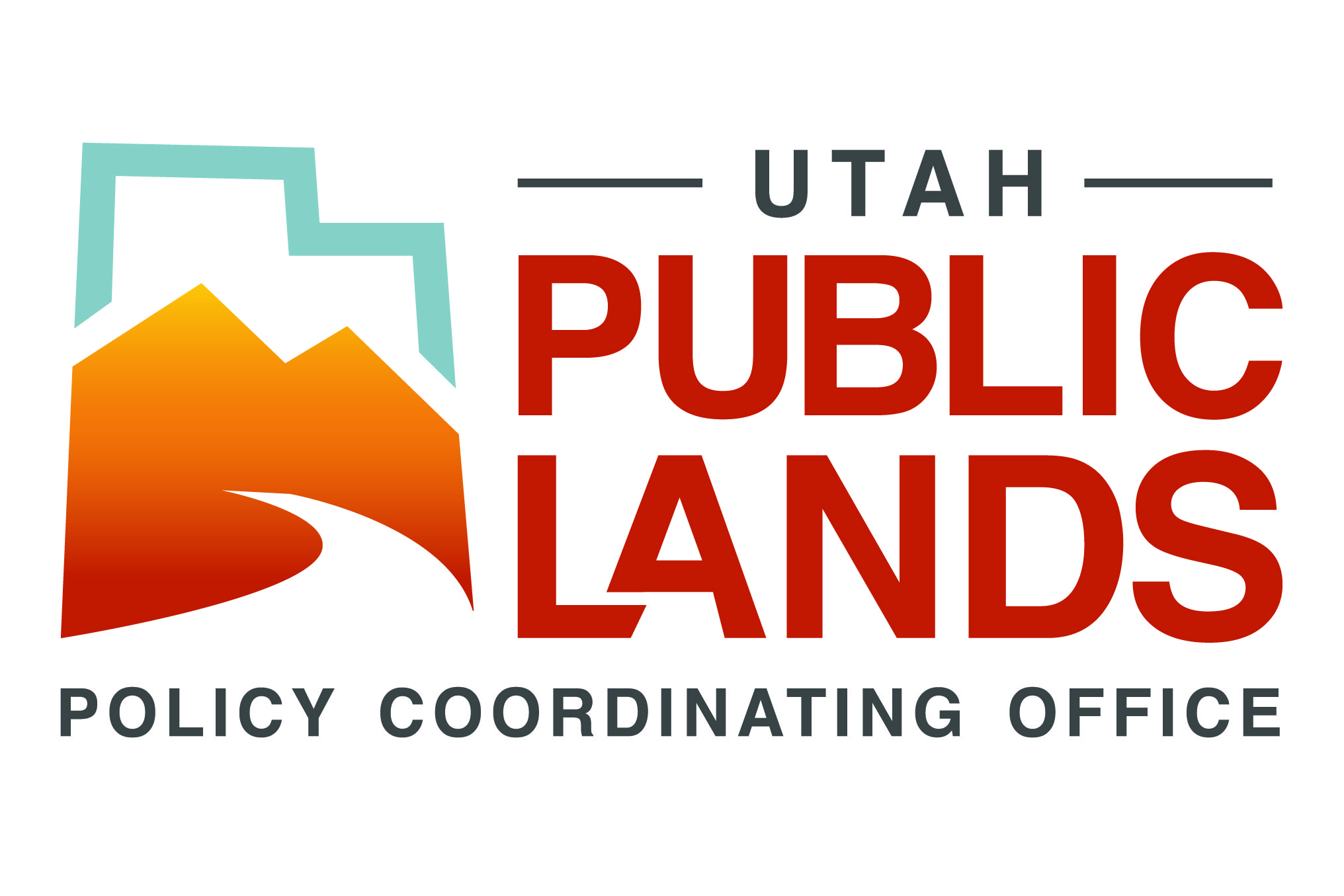The State of Utah supports the wise use, conservation, and protection of public lands and their resources, including well-planned management prescriptions. It is the State’s position that public lands be managed for multiple uses, sustained yields, prevention of waste of natural resources, and to protect the health, safety and welfare of the public.
It is important to the State economy that public lands be properly managed for fish, wildlife, livestock production, timber harvest, recreation, energy production, mineral extraction, water resources, and the preservation of natural, scenic, scientific, and historical values.
The cornerstone of this management is the coordination and cooperation between the State and Federal land management agencies. The State recognizes that federal agencies are mandated to manage public lands according to federal laws, policies, and regulations established within the framework of the U. S. Constitution, including the Federal Land Policy and Management Act (FLPMA), the National Forest Management Act (NFMA), and the National Environmental Policy Act (NEPA).
Under the Tenth Amendment to the United States Constitution, the State retains its authority as a sovereign except where specifically superseded by powers granted by the Constitution to the federal government. See U.S. Const. amend. X (“The powers not delegated to the United States by the Constitution, nor prohibited by it to the States, are reserved to the States respectively, or to the people.”). “The Tenth Amendment confirms that the power of the Federal Government is subject to limits that may, in a given instance, reserve power to the States.” New York v. United States, 505 U.S. 144, 157 (1992). In taking actions affecting States, the federal government must always consider whether an incident of state sovereignty is protected by a limitation on an Article I power. See, id. The Tenth Amendment requires that the federal government treat the State as a sovereign entity – a separate government with unique and distinct powers to be consulted regarding matters pertaining to lands within its borders and affecting its citizens.
Federal Land Policy and Management Act
FLPMA (43 USC 1712(c)(9)) requires the BLM to coordinate Plans with the land use planning and management programs of the States and Local Governments within which the lands are located. The BLM Land Use Plans “shall be consistent with State and local plans to the maximum extent [the Agency] finds consistent with Federal law and the purposes of this Act.”3
The BLM has the responsibility to assure that consideration is given to those State, local, and tribal plans that are germane in the development of land use plans for public lands and to resolve, to the extent practical, inconsistencies between Federal and non-Federal Government plans.
National Forest Management Act
NFMA (16 U.S.C. §1604(a)) requires that the USFS Forest Plans be “coordinated with the land and resource management planning processes of State and local governments and other Federal agencies.”
National Environmental Policy Act
Under NEPA (42 U.S.C. § 4321), federal agencies are required to identify possible conflicts with state, local, and tribal plans during the environmental review process and determine the significance of the conflict. Where an inconsistency exists, the review should describe the extent to which the federal agency would reconcile its proposed action with the plan or law.5
Cooperation
Under NEPA, all Federal Agencies must complete a NEPA analysis for proposed actions that are likely to have an impact on the natural or human environment. Federal Agencies can designate State and Local Governments to become formal partners in the NEPA process, as Cooperating Agencies. A State or Local Government can be a Cooperating Agency when it has special expertise with respect to any environmental impact involved in the project proposal. Cooperating Agency status gives the State or Local Government early input into NEPA analyses and some ability to shape the goals and framework of the Federal proposal.
Federal agencies should request participation of Cooperating Agencies in the NEPA process at the earliest possible time, using the environmental analysis and proposals of cooperating agencies with jurisdiction by law or special expertise, to the maximum extent possible consistent with its responsibility as lead agency.
Coordination
When creating Land Use Plans or Resource Management Plans, BLM and USFS are required to coordinate their plans with State and Local Government plans. Coordination is a separate process from Cooperation, and must occur regardless of whether State or Local Governments were designated Cooperating Agencies. Agencies must make efforts to draft Federal Plans that coordinate with State and Local Plans.
FLPMA provides a detailed baseline for the coordination process and identifies specific BLM actions:
- Remain informed of local land use plans;
- Guarantee that local land use plans are given proper consideration;
- Attempt to resolve inconsistencies between local and BLM land use plans; and
- Provide meaningful involvement for local entities early and throughout the decision-making process.
NFMA requires the USFS to coordinate with local governments but does not specify how the process of coordination is to be accomplished. Forest Service regulations require:
- Responsible officials coordinate with local governments.
- Responsible officials shall review local plans and policies that are relevant to the federal plan. The review will consider the objectives of local plans, the compatibility and interrelated impacts between local and federal plans, opportunities to address impacts and contribute to joint objectives, and opportunities to resolve or reduce conflicts. This review must be included in the NEPA document.
- The responsible official will not direct or control management of lands outside of the planning boundary.
Consistency
Consistency between federal, state, local, and tribal plans is the desired outcome for the coordination and cooperation processes required of federal agencies. The importance of coordination and cooperation between state, local, and Federal agencies during planning processes cannot be overstated. Early involvement and equal consideration in environmental reviews, as Interdisciplinary Team members, stakeholders, and Cooperating Agencies is the State’s main objective and motivation for creation of the State Resource Management Plan.
OTHER IMPORTANT FEDERAL REGULATIONS
Section 106 of the National Historic Preservation Act
Before a federal agency funds, licenses, permits, or otherwise authorizes a proposed undertaking, Section 106 of the National Historic Preservation Act requires that agency to take into account the undertaking’s effect on historic properties—cultural and historical resources that are eligible for inclusion in the National Register of Historic Places. The agency must then give the President’s Advisory Council on Historic Preservation a chance comment.
The Section 106 Process provides detailed steps to meet this statutory requirement, and also allows other consulting parties to participate. These parties include, among others, Indian tribes and the State Historic Preservation Officer. A common misconception about the Section 106 Process is that it can prevent an undertaking from occurring. On the contrary, the process actually assists the undertaking by seeking to identify historic properties potentially affected by the undertaking, assessing its effects, and looking for ways to avoid, minimize, or mitigate any adverse effects on historic properties.
Section 404 of the Clean Water Act
Section 404 of the Clean Water Act (CWA) establishes a program to regulate the discharge of dredged or fill material into waters of the United States, including wetlands. Activities in waters of the United States regulated under this program include fill for development, water resource projects (such as dams and levees), infrastructure development (such as highways and airports) and mining projects. Section 404 requires a permit before dredged or fill material may be discharged into waters of the United States, unless the activity is exempt from Section 404 regulation (e.g., certain farming and forestry activities).
The basic premise of the program is that no discharge of dredged or fill material may be permitted if: (1) a practicable alternative exists that is less damaging to the aquatic environment or (2) the nation’s waters would be significantly degraded. In other words, when you apply for a permit, you must first show that steps have been taken to avoid impacts to wetlands, streams and other aquatic resources; that potential impacts have been minimized; and that compensation will be provided for all remaining unavoidable impacts.
Proposed activities are regulated through a permit review process. An individual permit is required for potentially significant impacts. Individual permits are reviewed by the U.S. Army Corps of Engineers EPA website, which evaluates applications under a public interest review, as well as the environmental criteria set forth in the CWA Section 404(b)(1) Guidelines, regulations promulgated by EPA. Some states have assumed this permitting authority and regulate these activities.
For most discharges that will have only minimal adverse effects, a general permit may be suitable. General permits are issued on a nationwide, regional, or state basis for particular categories of activities. The general permit process eliminates individual review and allows certain activities to proceed with little or no delay, provided that the general or specific conditions for the general permit are met. For example, minor road activities, utility line backfill, and bedding are activities that can be considered for a general permit. States also have a role in Section 404 decisions, through State program general permits, EPA website, water quality certification, or program assumption.

